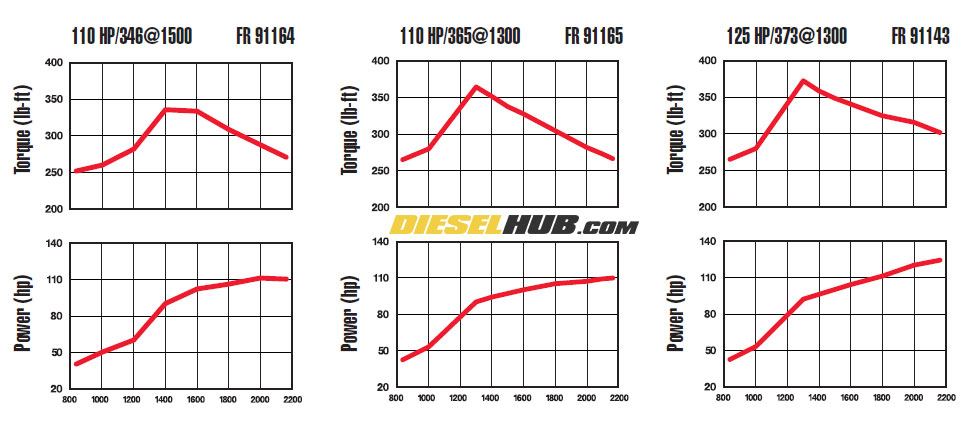4BT Cummins Applications
The primary applications of the 4BT are in off-highway construction, agricultural, and industrial equipment; gensets, irrigation pumps and equipment, airport baggage carts and "tuggers", fork lifts, and commercial wood chippers. Marine versions of this engine have also been produced in various power configurations. It is often confused with the Isuzu 4BD2 and 4BD1, which is also an inline 4 cylinder with a 3.9 liter displacement. The Isuzu engine series is in no way, shape, or form related to or interchangeable with the 4BT Cummins. The 3.9L Isuzu is a common application in Chevy step vans (P trucks).
The "4BT" is a turbocharged version of the 3.9L B Series engine, whereas the "4B" is a naturally aspirated variant of the same basic engine concept. 4BT engines are found with a fairly wide range of factory power ratings, some designed for continuous duty applications (gensets and marine applications, for example) and others more variable drive cycles. The horsepower rating for a 4BT engine is stamped into the engine data plate (long metal tag) affixed to the top of the front engine cover in the vicinity of the injection pump.
The 4BT Cummins is most well known for engine swaps and diesel conversions. Its small package and broad parts availability make it popular in a wide range of custom applications, including Jeeps, small to midsize pickups and SUVs, and even fullsize trucks. Although the engine features a relatively small displacement, it produces generous amounts of low-end torque and is easily modified for significant performance gains. Albeit relatively heavy at over 700 lbs, the 4BT may very well be the most versatile option for diesel conversions.
4BT Cummins Specs
| Engine | Cummins 4BT, 3.9B, Cummins 3.9 B Series, 4BT3.9 | |
| Manufacturer | Cummins Engine Company, Cummins Inc. | |
| Applications/Production Years | Various commercial, industrial, and agricultural applications through 1998; recreational vehicles, generator sets (gensets), skid steers, forklifts, commercial grade wood chippers, Case backhoes & skip loaders, airport baggage carts & tuggers, water pumps, marine vessels, etc. | |
| Displacement | 239.63 CID (239 CID nominal), 3.92 liters (3.9 liters nominal) | |
| Configuration | Inline 4 cylinder (I-4), 4 stroke diesel | |
| Bore | 4.02 inches (102 mm) | |
| Stroke | 4.72 inches (120 mm) | |
| Bore/Stroke Ratio | 0.85 (undersquare) | |
| Compression Ratio | Application & output dependent; 16.5:1, 17.5:1, 18:1, 18.5:1 | |
| Firing Order | 1-3-4-2 (cylinder 1 located at front of engine, cylinder 4 at the rear) [1] | |
| Cylinder Numbers |  |
|
| Engine Block Material | Cast iron | |
| Cylinder Head Material | Cast iron | |
| Injection System | Direct injection (DI), mechanical gear driven injection pump, mechanical fuel injectors | |
| Aspiration | Turbocharged and naturally aspirated configurations produced; intercooling found on some models. "4BT" model designations are turbocharged, "4B" model designations are naturally aspirated |
|
| Valvetrain | OHV, 2 valves per cylinder (8v), solid lifter camshaft | |
| Valve Lash (Clearance) | Exhaust valves | 0.020" (engine cold) |
| Intake valves | 0.010" (engine cold) | |
| Engine Oil Capacity | Varies with application; typically 10 to 15 quarts w/ filter change. Standard, midsize, and deep oil pan types produced. Oil pan capacity can be determined by entering the engine serial number into the Cummins "Quickserve" system |
|
| Engine Oil Spec | Varies w/ application & operating conditions | |
| Fuel | #1/#2 diesel fuel; engine predates modern biodiesel availability [2] | |
| Horsepower | 64 - 130 horsepower; output varies with application. Common ratings include: 105 hp @ 2,300 rpm (early industrial engine) 110 hp @ 2,500 rpm 125 hp @ 2,500 rpm 130 hp @ 2500 rpm (4BTA, turbocharged and intercooled version industrial engine) |
|
| Torque | 267 - 385 lb-ft; output varies with application. Common ratings include: 267 lb-ft @ 1,700 rpm (early industrial engine) 286 lb-ft @ 1,700 rpm 344 lb-ft @ 1,500 rpm (4BTA, turbocharged and intercooled version industrial engine) 348 lb-ft @ 1,500 rpm 373 lb-ft @ 1,300 rpm 385 lb-ft @ 1,300 rpm |
|
| Governed Speed | Varies widely with application | |
| Engine Weight | 745 - 782 lbs with lube oil, less accessories and flywheel | |
| Engine Dimensions | Length | 30.6 inches |
| Width | 24.6 inches | |
| Height | 37.7 inches | |
[1] Orientation of engine in commercial/industrial equipment applications may vary. The "front" of the engine is conventionally where the water pump and accessory drive is located, while the "rear" of the engine is where the flywheel is mounted.
[2] The 4BT Cummins predates modern ULSD regulations and biodiesel compatibility. The engine will run without issue on both fuels, although the effects of extended biodiesel usage are largely sporadic, vague, and/or unknown. Recommend a supplemental fuel additive to increase fuel lubricity regardless of diesel fuel type used, which will help prolong fuel system life.
4BT Cummins Horsepower & Torque Curves

Source - 2004 Cummins B Series sales sheet
4BT Cummins & 3.9 Isuzu Confusion
The 4BT Cummins is sometimes confused with the Isuzu 4BD1 and 4BD2, which is also a 4 cylinder engine with a nominal displacement of 3.9 liters. The Isuzu 3.9 liter is a primarily on-highway engine found in Chevrolet and Isuzu cab-over trucks from the mid-1980's through the late 1990's. The Cummins 4BT is more commonly found in industrial applications of a similar, overlapping timespan. The two engines differ considerably in physical appearance, with the 4BT's iconic four individual valve covers serving as an immediate and obvious indication of authenticity should the engine label be missing, covered, or illegible. The Isuzu engines feature a single valve cover with the Isuzu logo cast into one side.